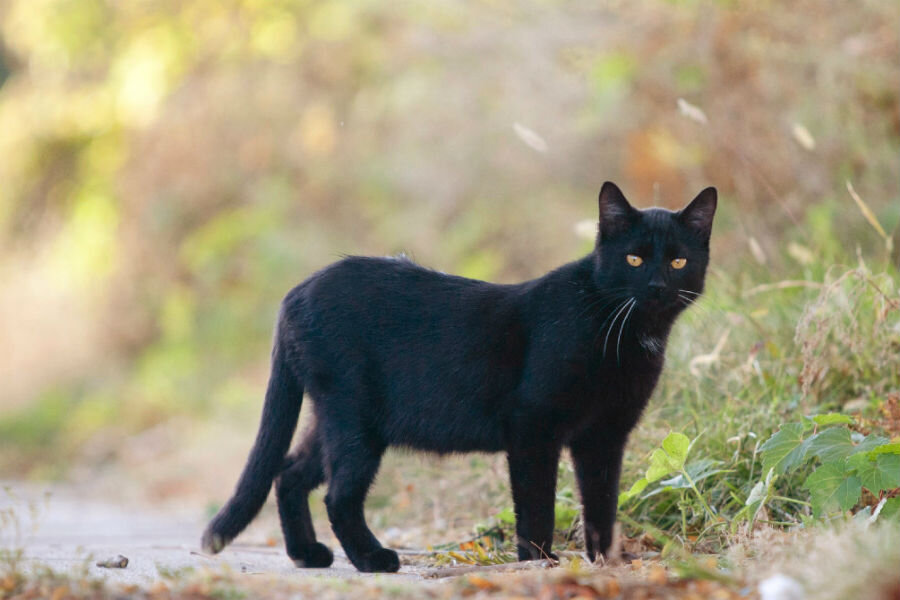Australia's deadliest invaders: Feral cats?
Loading...
According to a new study, 99.8 percent of Australia's land mass is now home to feral cats, a species brought to the continent only a few centuries ago. But while humans may enjoy their pets, it only took a few runaways to populate the outback with an invasive predator.
And that's bad news for Australia's more bite-sized species.
Feral cats in Australia have demolished populations of birds and small mammals ever since they were introduced to the region. In the wild, cats behave like any predator, stalking and eating prey in order to survive. In Australia, many indigenous species are at significant risk of extinction – and some have already been wiped out by the cats.
The rise of feral cats puts two groups at odds that are accustomed to working together: cat lovers and wildlife managers. To conservationists, these cats are first and foremost an invasive species that pose a very real threat to one of the Earth's most biologically diverse regions. In that light, feline populations must be controlled, often in ways that make people who are accustomed to thinking of cats as pets uncomfortable.
According to the study, published in the journal Biological Conservation, Australia's feral cat population in natural environments varies widely, between 1.4 million during continent-wide droughts and 5.6 million after wet periods. Another 700,000 feral cats are thought to live in highly modified environments like cities or garbage dumps.
But while the actual population density of cats in Australia is smaller than the population density of cats in North America and Europe, their impact on indigenous Australian species, many of which can be found nowhere else, has become an increasing concern for conservationists over the past few decades.
Feral cats are thought to be responsible for the extinction of no less than 20 native Australian mammal species already, and they have likely contributed to the decline of many others.
"Our study highlights the scale and impact of feral cats and the urgent need to develop effective control methods, and to target our efforts in areas where control will produce the biggest gains," said study lead author Sarah Legge, from The University of Queensland, in a statement.
"At the moment, feral cats are undermining the efforts of conservation managers and threatened species recovery teams across Australia," she said.
Australia is not the only place where cats have a significant environmental impact. A study published in 2013 found that cats kill between 1.4 billion and 3.7 billion birds and between 6.9 billion and 20.7 billion small mammals annually in the United States, including many native rodent species.
"All outdoor cats can pose risks to wildlife," wrote Niamh Quinn, a University of California Cooperative Extension human-wildlife interactions adviser at the South Coast Research and Extension Center in Irvine, in an email to The Christian Science Monitor. "Keeping cats indoors limits their risk to native species."
The threats posed by hunting cats is particularly pronounced in Australia, which is one of about 12 so-called megadiverse countries, which are home to over 70 percent of of the world's species. Due to its isolation from the rest of the world, Australia is the only continent on Earth – apart from Antarctica – where species evolved without cats. As a result, there are no natural checks and balances to keep the invasive cat population from destroying local wildlife.
Cats may have arrived in Australia as early as the 17th century, escaping Dutch ships that sank off the coast. There were certainly cats aboard the first fleet to Australia in 1788, which were used to catch rats on the ships that carried convicts to the continent. Some early settlers deliberately imported cats to control the local rat and mice populations in their new home. By the 1850s, feral cats were firmly established in the wild, and their numbers have spread across the country ever since.
As hard as it may be for cat-lovers to accept, the population of feral cats in Australia is no different from any other invasive species in terms of environmental impact, and requires tough measures in order to save indigenous species.
"Currently, Trap-Neuter-Return programs are not effective at curbing the population," says Dr. Quinn. "Mathematical models of feral cat populations indicate that 71–94 percent of a population must be neutered for the population to decline, assuming there is no immigration.... Current TNR programs are not operating at this rate."
Suggested solutions include the introduction of more dingoes to bring down feral cat populations or rebuilding dense habitats for small marsupials that include artificial "boltholes" through which the creatures can escape if being stalked by a cat. A truly effective solution, however, will likely include a combination of strategies to keep the felines in check.
"The federal government has a target of culling 2 million cats over five years. That's very good, it's very ambitious," Dr. Legge told the Australian Associated Press. "But it's going to be very important to target cat culling to achieve the greatest benefit for wildlife."
Currently, the only part of Australia entirely free of cats are a few islands and some fenced-in conservation areas.
"If you get rid of cats on larger islands, you can then stop their reintroduction with biosecurity measures," said Legge, "and then you have a big area that's safe for wildlife."








